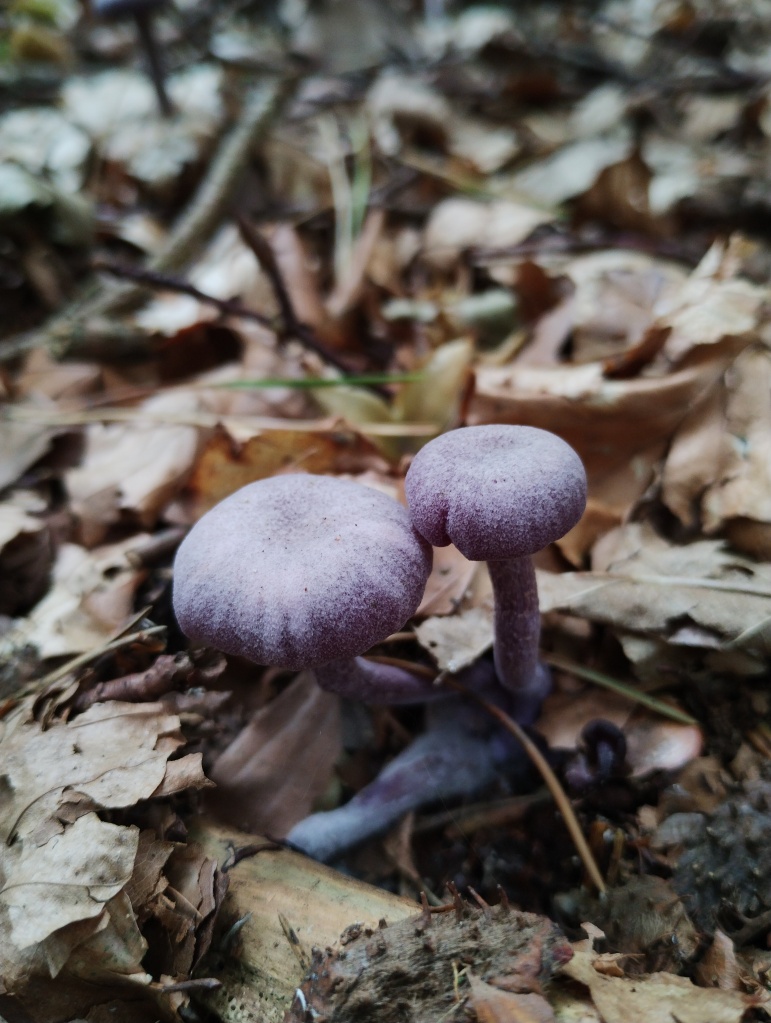It is typical that as the young ones head back to school the weather makes a slight improvement, although not much to behold! It certainly feels like summer is drawing to a close recently with the build-up of wildfowl numbers, many of our flowers starting to release their seed and the increasingly plentiful array of fungi which are enjoying the warm edaphic conditions.
The fungal highlight for me on Loch Leven is usually the emergence of the amethyst deceiver, named because of its highly variable shape and colour. A beechwood specialist, the only place I have spotted it is unsurprisingly within the beeches near Mary’s Knowe. There is a patch of them which are almost completely white!

I came across the following peculiar plant the other day during a pond-dipping event. Pleasantly known as water-starwort (Callitriche stagnalis), it is a native aquatic plant that favours slow or non-moving water. One to look out for the next time! One thing that becomes clear very quickly during pond-dipping is that there is an entire world at work below the water that we’d never know a thing about if we didn’t look.

On the topic of wetlands, the plant below is known as thread rush (Juncus filiformis). Much like the Loch Leven spearwort (Ranunculus x levenensis) from the last blog, it is thought to have been brought to the reserve on the feet of wildfowl who use the wetlands. Although inconspicuous, there are only a handful of sites in Scotland, requiring sites that are periodically-inundated with water.

I noticed that there are still many invertebrates around within our wetlands. This poor damselfly was turned into a meal for a spider.

While passing by Pollinator Park, I noticed this excellently-camouflaged shieldbug in amongst the dispersing seeds of the field scabious. Not one I recalled seeing before, some ID shows it to be Dolycoris baccarum, the sloe shieldbug. With blackthorn (i.e. sloes) growing at Pollinator Park, I assumed it may have a connection with the shrub, but apparently neither the adult or larvae have anything to do with sloes!

The image below details well two different forms of lesser stitchwort (Stellaris graminea), pointed out by colleague and former Loch Levener Steve Longster. The left flower shows a healthy, unaffected plant but the right and bottom flowers have been infected (apparently by a species of fly). Despite attempts in the past, I have been completely unable to find any further information about this phenomenon so you will just have to take my word for it!

There has still been plenty to be getting on with here at the reserve. The balsam is approaching its final days (before any attempts to prevent it seeding actually just make it worse!) and we still have many visitors enjoying the last of the summertime. Keep an eye out on the loch for all sorts of wildfowl youngsters.
It is now just under 2 weeks before our water access guidance reverts back to its winter timetable, where all forms of water access are prohibited, so if you are planning on getting out on the loch by following the suggested route, now is your last chance! Although, you’ll be needing gusts to be under 25mph, unlike today…

This is an interesting and well illustrated read!